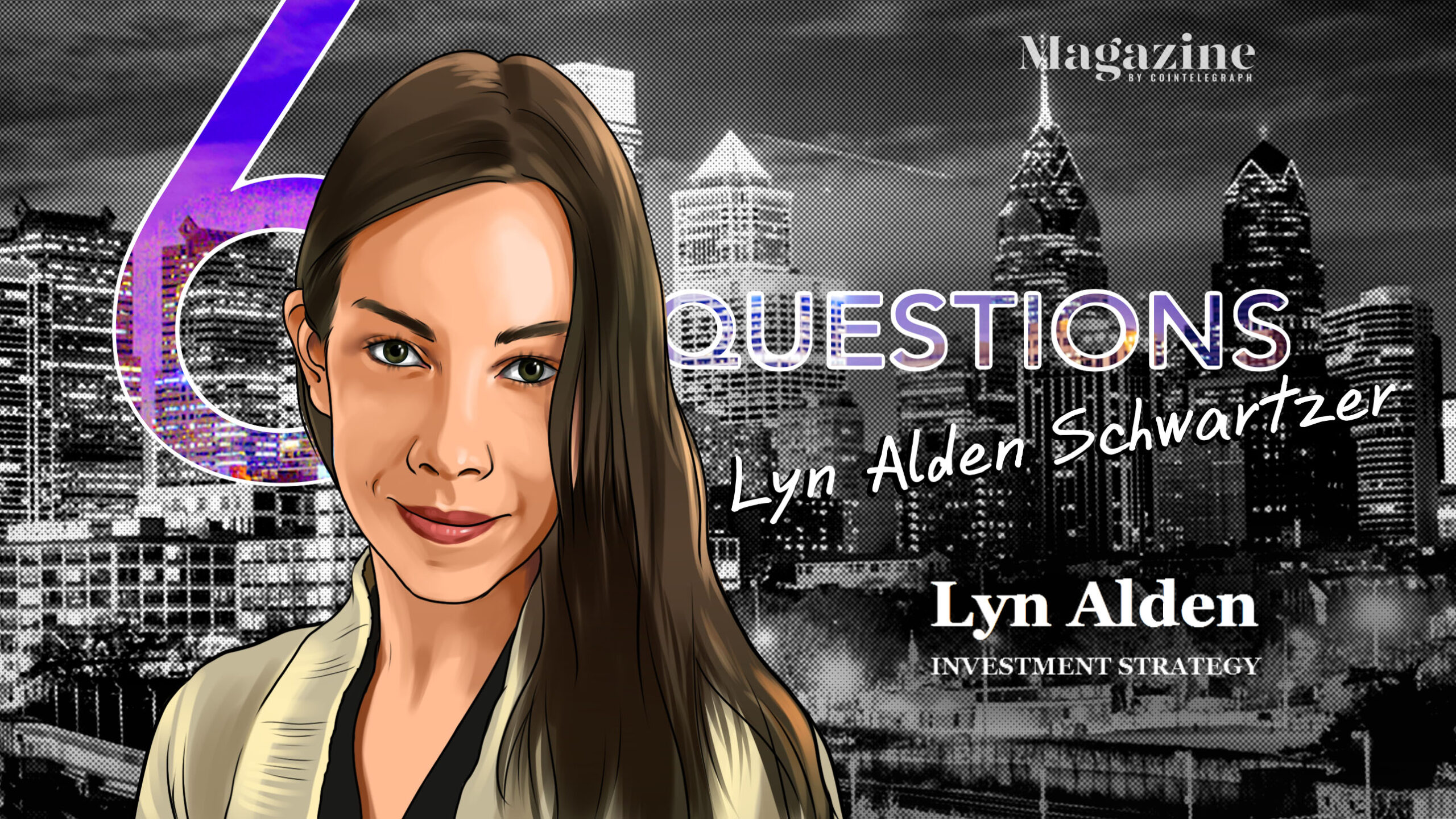We ask the buidlers in the blockchain and cryptocurrency sector for their thoughts on the industry… and we throw in a few random zingers to keep th

We ask the buidlers in the blockchain and cryptocurrency sector for their thoughts on the industry… and we throw in a few random zingers to keep them on their toes!
This week, our 6 Questions go to Lyn Alden Schwartzer, founder of Lyn Alden Investment Strategy, which provides an investment research service for both retail and institutional investors.
Lyn Alden began her career in engineering. After working in the automation industry as an intern, she graduated from college and started as a junior electronics engineer for an aviation simulation facility. Over the course of a decade, Lyn Alden worked her way up to become the head engineer of the facility, overseeing its project teams, contract staff and technical finances.
On the side, Lyn Alden also had a small investment research business that she enjoyed. Although she loved engineering and management, when her research business grew very large, it began to overshadow her prior work, and she left to pursue her research business full time. Lyn Alden covers macroeconomic trends, and since 2020, she has put a lot of research into Bitcoin, in particular.
1 — What is the single most innovative use case for blockchain that you’ve ever seen? It may not be the one likeliest to succeed!
Money.
The unmistakably innovative use case for blockchain is solving the double-spending problem, thus allowing people to transact and store value without a centralized third party.
Everyone is looking for “the next thing” that blockchains will be applied to, but I think people underestimate how big that total addressable market is from the first real application of blockchains: a peer-to-peer electronic cash system.
The entire world has a store-of-value problem. Interest rates in all developed countries are below the inflation rate. For lack of good money, we have monetized everything else, such as stocks, houses, luxuries and other things. In other words, we store a monetary premium in otherwise non-monetary assets above and beyond their utility value, as we want to hold anything other than cash. This is a problem leading to tens of trillions, or even over a hundred trillion dollars worth of monetary premium stored up in non-monetary assets.
And then beyond that, a significant part of the world has a payment problem. International payments are costly and inefficient — they face capital controls, they don’t have good access to cheap micropayments, they can be sanctioned, they can be surveilled, they can be confiscated from and so forth. The ability to send censorship-resistant payments is huge, and it’s something that many people in developed markets don’t think about too often, but they’re a huge deal for emerging markets in particular.
2 — What are the top five Crypto Twitter feeds you can’t do without, and why?
That’s a tough question because I like dozens of them. There are plenty of resources that I like from different platforms (e.g., podcasts, interviews, books, articles and so forth), but specifically for Twitter, I guess I have to go with @PrestonPysh, @Gladstein, @Adam3us, @Skwp and @Lightning.
I also like to follow people I disagree with, or broad crypto news feeds, so that my feed is always filled with multiple points of view.
3 — If the world is getting a new currency, will it be led by CBDCs, a permissionless blockchain like Bitcoin or a permissioned chain such as Diem?
I think for a period of time, we are going to have all of the above.
Some countries like China are strongly pursuing the CBDC route, which gives them more surveillance and control over their economy and population. They’ll have a greater ability to surveil transactions, block transactions, automatically debit people’s accounts based on infractions or their social credit score, and program money so that it can only be used in certain places or certain times. It will also give them the ability to go around the SWIFT system, to give them more control over their international commerce with some of their trading partners.
Most other central banks have not done as many years of research into CBDCs as China has and are not able to move that quickly into a new currency system. I think what we will likely see in the United States is a growing usage of regulated and permissioned stablecoins, including entities such as USD Coin, Diem and others. This can be thought of as a public/private partnership in some ways as these technologies get more integrated into the banking system.
Meanwhile, Bitcoin has been operating for nearly 13 years with increasing adoption and is the digital asset that can be thought of as sufficiently decentralized, with the battle scars to prove it. My expectation is that it’ll continue to grow over time and become an increasingly attractive form of global collateral and global money. I think the world will maintain various currencies in various ways, but I expect Bitcoin to grow its market share quite a bit from its current small levels. I…
cointelegraph.com
